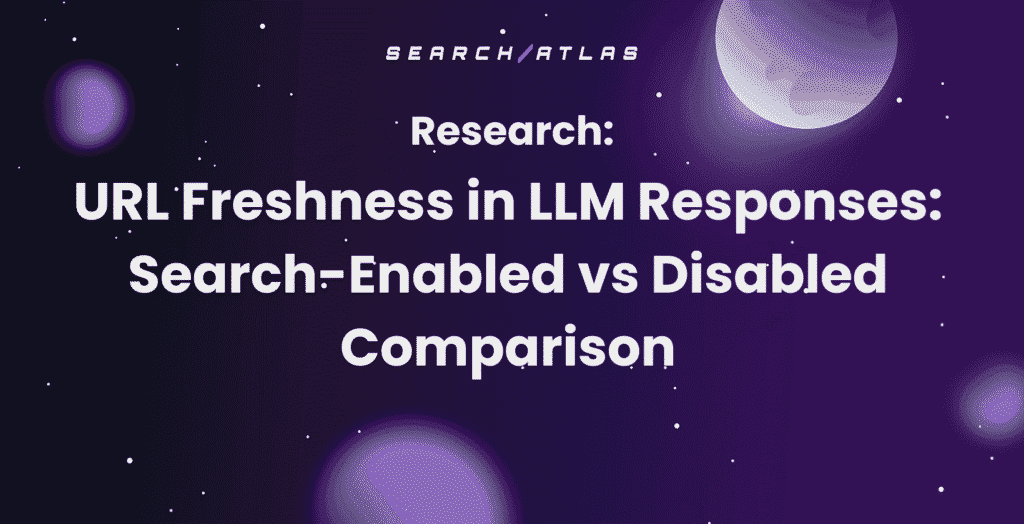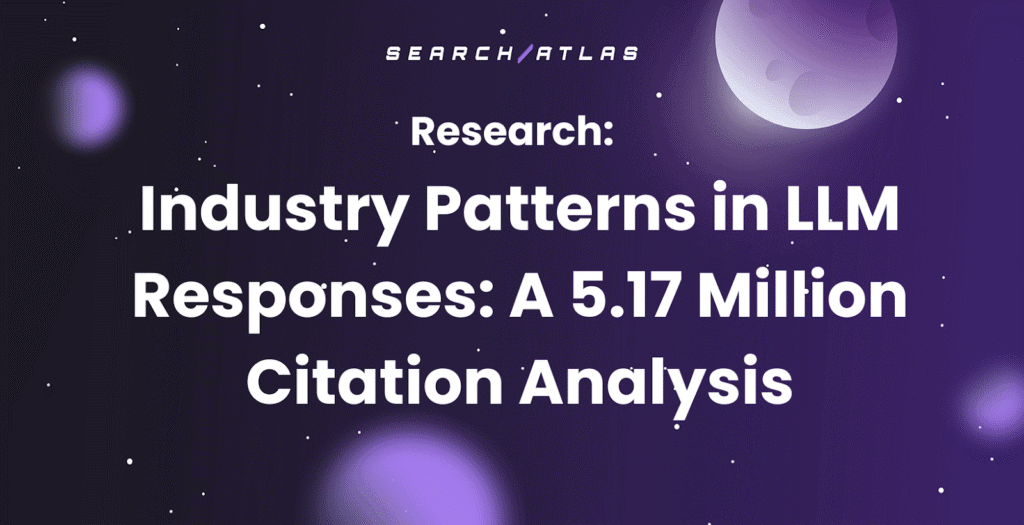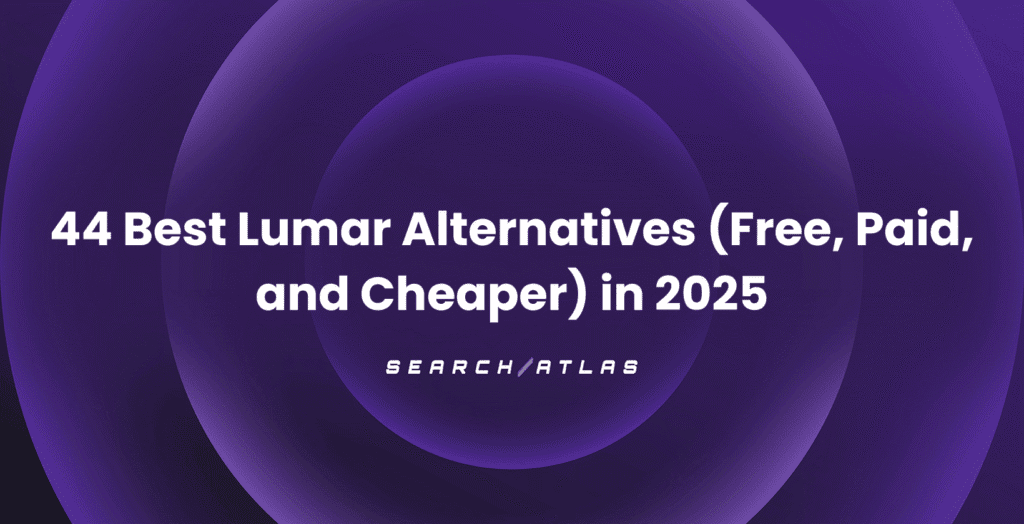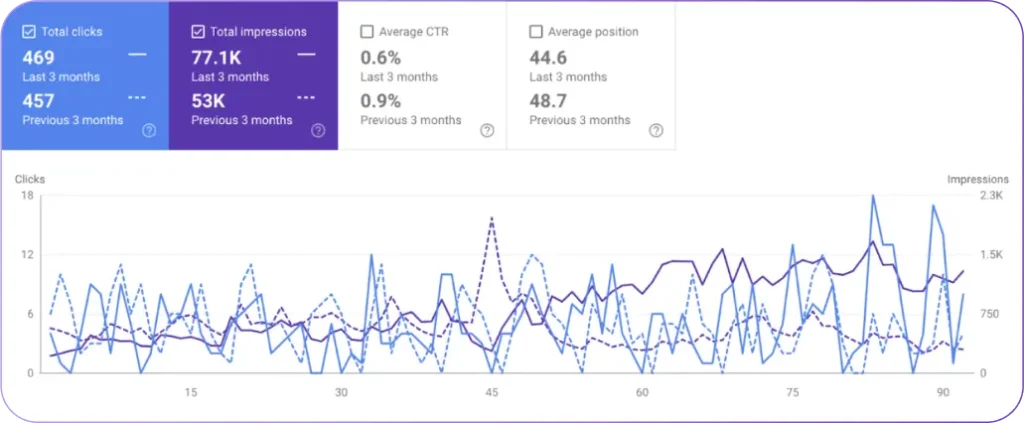Semantic HTML uses HTML elements that describe what their content means, not just how it looks. When you rely on tags like header, nav, main, article, section, and footer instead of generic containers, you give browsers, assistive tools, and search engines a clearer picture of your page’s structure and purpose. These elements signal hierarchy, define topical boundaries, and help systems understand how different pieces of content relate to one another.
This guide breaks down how semantic HTML improves indexing, accessibility, and LLM comprehension. You’ll see the exact HTML5 elements worth prioritizing, the measurable SEO and accessibility benefits they provide, and a practical audit workflow you can apply immediately. You’ll also learn how semantic markup ties directly into Schema.org, knowledge graphs, and the structured data that modern search engines rely on. Finally, the article shows how automation tools can streamline semantic improvements without compromising developer oversight.
What Is Semantic HTML and How Does It Improve SEO?
Semantic HTML communicates the role of each element, making it easier for search engines to understand content as entities, relationships, and topical sections. Crawlers use these signals to reduce ambiguity during indexing and to identify the content most likely to appear in snippets or rich results.
Clear structure improves crawl efficiency, supports structured data, and helps search engines select accurate titles, descriptions, and entities. The next sections outline the core HTML5 elements and the specific ways they strengthen search engine understanding.
What Are Semantic HTML and HTML5 Semantic Elements?
HTML5 introduced semantic elements that define common page regions, making content both discoverable and meaningful. Tags like header, nav, main, article, section, aside, footer, figure, and figcaption all express intent:
- header groups introductory content.
- nav identifies primary navigation.
- article wraps independent, standalone content.
- section organizes related themes.
- figure and figcaption provide media with context.
Examples include a blog post wrapped in article with its own header and footer, documentation that uses nav for the table of contents and main for the body, or product pages that rely on figure for images and descriptive captions.
Using these elements minimizes reliance on generic containers and improves both accessibility and machine readability. Understanding them also sets the stage for more effective Schema.org mapping.
The foundational ideas behind semantic HTML and its connection to Schema.org have long been studied in the field.
How Does Semantic HTML Enhance Search Engine Understanding?
Semantic HTML strengthens search engine comprehension by creating labeled anchors aligned with entity extraction and content segmentation. Crawlers rely on the document outline to identify the main entity, prioritize headings, and associate metadata—such as author or publish date—with the right section.
For example, placing a blog title inside article > header > h1 sends a strong signal that the heading is the primary title and the article is the main topical unit. This makes snippet selection more reliable and reduces confusion caused by deeply nested, non-semantic containers. The next section outlines the concrete SEO and accessibility benefits you can expect.
What Are the Key Benefits of Using Semantic HTML for SEO and Accessibility?
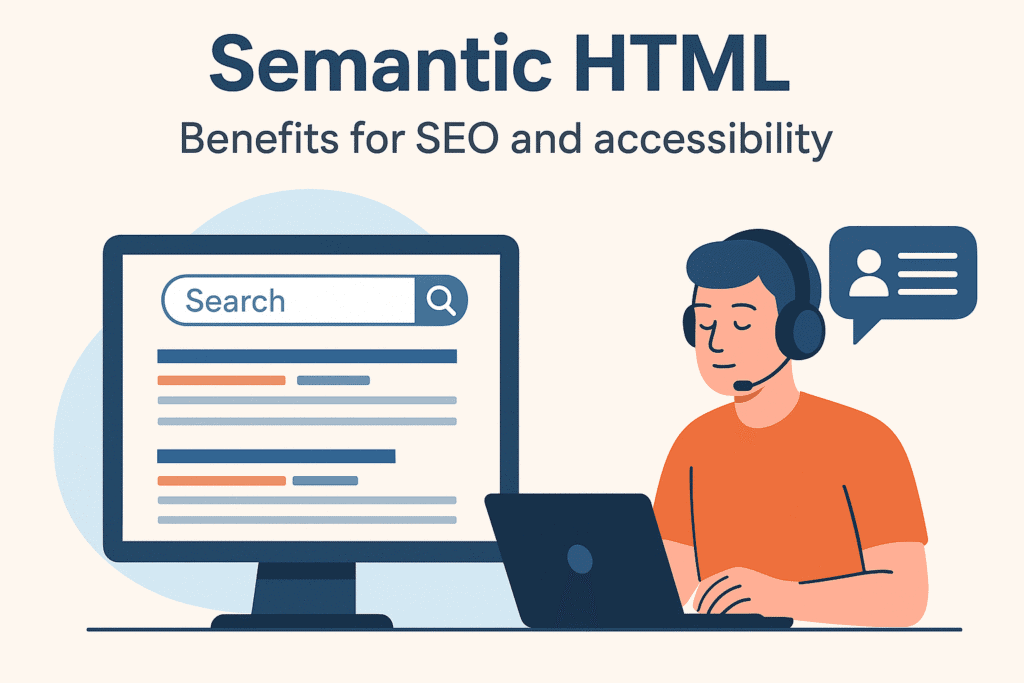
Semantic HTML delivers clear, measurable improvements across indexing, accessibility, maintenance, and AI interpretation. These gains come from reducing parsing errors, clarifying content roles, and improving how assistive tools interpret the page.
Key benefits include:
- Improved Indexing Accuracy: Search engines can more easily map content to the entities it describes.
- Better Snippet Eligibility: Organized headings and sections help search engines extract cleaner, more relevant snippets.
- Enhanced Accessibility: Screen readers navigate more predictably when semantic elements and ARIA are used correctly.
- Stronger Inputs for AI and LLMs: Labelled content blocks improve RAG retrieval and overall answer quality.
Below is a table mapping semantic tags to the specific outcomes and metrics worth tracking.
| Semantic Tag | Benefit Type | Expected Outcome / Metric |
| header / h1–h6 | SEO & UX | Clear headline signals; improved snippet selection |
| nav | Accessibility & SEO | Faster screen-reader navigation; lower bounce rates |
| article | Structured Data & Indexing | Reliable mainEntityOfPage; improved rich result eligibility |
| section | Content Segmentation | Stronger topical clustering; more relevant internal linking |
| figure / figcaption | Media Context | Accurate caption extraction for image search |
How Does Semantic HTML Improve SEO Performance and Crawl Efficiency?
Good semantic structure makes crawling more efficient by reducing parser guesswork and helping crawlers identify the most important content faster. When headings and sections mirror the actual hierarchy, crawlers spend less time applying heuristics and more time understanding the page.
Measurable improvements include:
- Higher crawl-to-index ratios
- Faster updates appearing in the index
- Cleaner index coverage reports tied to logical sections
Tracking crawl depth, time to index, and rich result impressions helps confirm whether your semantic improvements are working. Accessibility plays a complementary role, as covered next.
Why Is Semantic HTML Essential for Web Accessibility and Screen Readers?
For assistive technologies, semantic HTML is foundational. Elements like nav, main, and other landmarks allow screen readers and keyboard users to jump directly to the content they need. A logical heading order and clear sectioning provide structure, while ARIA fills in gaps when native semantics aren’t enough.
Screen-reader testing, keyboard navigation checks, and accessibility validators ensure your page behaves as intended. These validations often uncover SEO-related issues as well, making accessibility a powerful quality gate for both disciplines.
What Are the Best Practices for Implementing Semantic HTML?

Effective semantic HTML starts by choosing elements based on meaning, maintaining a clean heading hierarchy, and pairing native semantics with ARIA only when needed. Key practices include:
- Use semantic tags instead of divs when the meaning is clear.
- Keep only one main element per page.
- Follow a logical heading progression (h1 → h2 → h3) without skipping levels.
These rules reduce ambiguity for both humans and machines. The table below summarizes recommended usage for the main elements.
| Element | Recommended Practice | Accessibility Consideration |
| nav | Use for primary navigation | Use aria-label when multiple navs exist |
| main | Wrap primary page content | Avoid nesting; rely on landmarks |
| article | Use for standalone entries | Include header and footer for context |
| section | Use for thematic grouping | Add descriptive headings |
| figure / figcaption | Pair media with captions | Provide alt text and descriptive context |
Which HTML5 Semantic Elements Should Web Developers Use?
Developers should standardize a core set of semantic elements across common templates—blog posts, product pages, documentation, and marketing content. For example:
- Wrap blog posts in article with a header for the title and a footer for metadata.
- Use nav for table-of-contents sections in documentation.
- Rely on main for the primary content area.
- Avoid overusing section when a paragraph or aside is more appropriate.
Consistent templates make audits easier and ensure automated corrections behave predictably.
How Should Semantic HTML Be Structured to Maximize SEO and Accessibility?
A solid document outline starts with a single h1 in either the header or main. Subsequent h2 and h3 sections should introduce distinct topic segments.
Place structured data—like JSON-LD—in the head or near the closing body tag, and ensure the visible content appears early in the DOM. When article acts as a wrapper, it pairs naturally with properties like headline, author, and datePublished in JSON-LD.
These practices help search engines select better snippets and strengthen knowledge graph extraction.
How Does Semantic HTML Support Structured Data and Knowledge Graph Optimization?
Semantic HTML creates clean anchors for Schema.org properties and simplifies JSON-LD placement. Consistent use of article, figure, and similar elements makes it easier to reference content blocks and express relationships such as sameAs or about.
This clarity improves entity extraction and supports knowledge graph accuracy. The table below shows how elements map to Schema.org types.
| Semantic Element | Schema Type | How Semantic HTML Supports It |
| article | Article / TechArticle | Natural container for headline, author, and datePublished |
| figure / img | ImageObject | Captions and alt text map cleanly to metadata |
| nav | SiteNavigationElement | Helps define primary site structure |
| section | WebPageElement | Allows page subdivision into meaningful units |
The link between semantic HTML and structured data also plays a major role in building and maintaining high-quality linked open data.
What Is the Relationship Between Semantic HTML and Schema.org Markup?
Semantic HTML provides the structure that JSON-LD or Microdata relies on to connect properties to the right content. Wrapping your content in an article lets mainEntityOfPage point directly to that block, and the headline can match the h1 inside it. This reduces mismatches between visible and machine-readable content and minimizes validation errors.
Place JSON-LD in predictable locations and ensure selectors or contextual references are aligned with semantic elements.
How Can Semantic HTML Help Build a Strong Knowledge Graph Foundation?
Consistent semantic markup supports reliable entity extraction by giving each entity a logical home in the DOM. Use canonical naming, apply sameAs links to authoritative profiles, and ensure your structured data matches the entities mentioned in your content.
Regular validation and monitoring help search engines connect your content to recognized identities. This strengthens your site’s presence in knowledge graphs and improves visibility across AI-driven features.
How Does Semantic HTML Enhance AI and LLM Visibility in Modern Search?
Semantic HTML improves AI visibility by creating clean, well-bounded text chunks ideal for embedding, retrieval, and scoring. Clear headings, lists, and sections act as retrieval anchors, while schema and consistent entity naming reduce ambiguity for downstream LLM reasoning.
Stronger structure leads to better chunking, clearer entities, and more reliable attribution—essential for surfacing content in AI-generated answers.
Why Is Semantic HTML Important for AI Answer Optimization and LLMs?
LLMs depend on high-quality passages when generating answers. Semantic HTML provides the exact boundaries that embedding systems look for. When paired with Schema.org, it reinforces entity context and reduces hallucinations.
Pages with strong semantic markers are more likely to be selected as authoritative sources in RAG-based search experiences.
How Does Search Atlas’s OTTO SEO Tool Automate Semantic HTML Optimization?
OTTO SEO analyzes pages for semantic structure, flags misused or missing elements, and generates prioritized recommendations. It identifies issues such as:
- Incorrect heading hierarchy
- Missing landmarks
- Schema alignment problems
The tool groups fixes by impact and provides examples that developers can implement directly. OTTO also tracks metrics like snippet eligibility and mainEntity consistency to show improvements over time.
How Can You Audit and Implement Semantic HTML Using Search Atlas Tools?
A repeatable audit workflow includes automated scanning, manual review, remediation, and validation. Start with a full site crawl to inventory elements and structured data. Then analyze semantic structure to identify missing landmarks, broken heading order, and inconsistent entities.
Prioritize templates and pages based on traffic and AI visibility potential. Implement template-level fixes first, then update individual pages. Validate using accessibility and schema tools, and monitor changes in indexing performance.
A typical workflow looks like this:
- Crawl the site to gather element and schema inventories.
- Analyze semantic structure for missing landmarks, heading issues, and schema gaps.
- Prioritize templates and high-value pages.
- Apply fixes and align JSON-LD with semantic blocks.
- Validate accessibility and structured data, then monitor indexing and AI metrics.
The table below summarizes common audit stages.
| Stage | Description | Outcome |
| Crawl & Inventory | Collect DOM and schema data | Establish baseline |
| Semantic Analysis | Identify hierarchy and landmark issues | Actionable fixes |
| Remediation | Apply template and page updates | Improved semantic clarity |
What Are the Steps to Perform a Semantic HTML Audit with OTTO SEO?
Using OTTO SEO, begin with a crawl that captures DOM structure across the site. The semantic analysis flags missing landmarks, heading order problems, and schema inconsistencies. OTTO groups the issues by impact and suggests practical fixes, such as moving JSON-LD or restructuring headings.
After implementing changes, rerun the audit to confirm improvements. OTTO provides before-and-after comparisons for snippet impressions, schema validation errors, and more. This process maintains developer control while reducing manual effort.
How Does Content Optimization Software Leverage Semantic HTML for Better Results?
Content optimization tools rely on semantic markers—headings, lists, and labeled sections—to improve NLP recommendations for structure, internal links, and entity mentions. They identify weak anchors and suggest targeted editorial updates that strengthen retrieval relevance for both search engines and LLMs.
Typical suggestions include:
- Adding subheadings for better content chunking
- Strengthening entity mentions with schema properties
- Improving anchor text for internal linking
You can measure results by tracking snippet appearances, AI-driven citations, and other retrieval-based metrics.
Final Notes on Scaling Semantic HTML
Teams aiming to scale semantic improvements should:
- Establish template-level standards
- Run automated scans regularly
- Prioritize high-traffic and AI-relevant pages for the biggest gains
These practices keep semantics consistent across deployments and improve both indexing and AI visibility over time.
Search Atlas’s OTTO SEO and content optimization tools support these workflows with automation, prioritization, and developer-friendly recommendations designed for consistent, measurable improvements.






